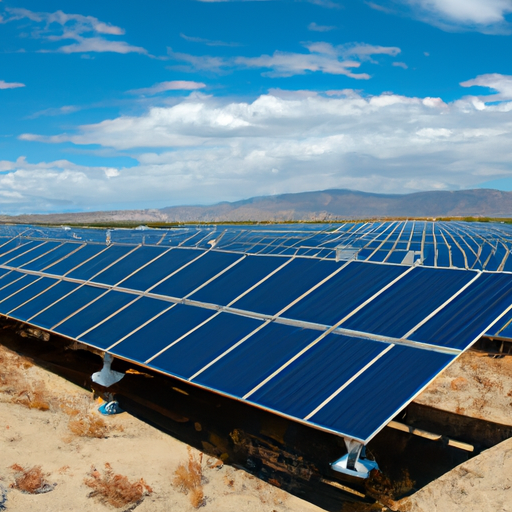The astounding significance of the Benban Solar Farm in Egypt near Aswan, Africa’s largest solar park and the world’s fourth largest, cannot be overstated. With an immense installed capacity of 1.8 GW, made up of 41 individual plants, it markedly transforms the energy blueprint of Northern African nations. The sheer enormity of this project not only illuminates over a million homes but also sprawls over 37 square kilometers, thereby cutting carbon emissions in Egypt by two million tonnes each year.
Job Creation and Economics: The Ripple Effects of Benban Solar Farm
Earth-friendly energy projects such as these do more than just reduce carbon emissions; they stimulate job growth. The creation of Benban Park offered a significant boost to employment, with construction jobs hitting at least 20,000 and maintenance positions fixed at 6,000. Furthermore, the financing model of this project could serve as a template for future large-scale renewable ventures in Africa. For instance, the project development was divided into 41 plots and given to 30 developers.
Government Policies and International Funding
The unique ‘feed-in tariffs’ policy initiated by the Egyptian government, which ensured a fixed price for power generation for a span of 25 years, played a significant role in the project’s realization. Coupled with support from the International Finance Corporation and the World Bank, it allowed for a steady flow of capital to renewable projects. This model of blending private investment through government policies with public investment positions a strong foundation for continuous private-sector participation.
Renewable Energy Prospects in Egypt
Egypt aims to generate 60% of electricity from renewable sources by 2040, a target that can significantly bank on solar power due to its ideal location. With a daily sunshine duration of 9 to 11 hours and a high radiation intensity between 2,000 and 3,000 kilowatt-hours per square meter, the country presents a rich ground for scaling up solar projects. Continuing the feed-in tariffs will likely draw more foreign investment towards large-scale wind and solar projects, with the Benban Park potentially becoming a training hub for future initiatives.
Education meets Development: Aswan’s Solar School Plan
The local authorities in Aswan plan to turn the Benban Industrial High School into a solar energy specialized institution, focusing on electromechanical engineering and solar energy. This is not the only nuance of the project though, as it employs bifacial solar modules. These advanced modules can generate power from both direct and reflected sunlight, enhancing the project’s overall output.
The Way Forward: Making Solar Space Bigger
The most profound impact of the Benban solar farm may be that it has shown the potential for the viability of large-scale solar projects in Egypt. Government-backed feed-in tariffs minimize investor risk and spur private investment in renewable projects. Added to this, is the workforce skilled in setting up massive-scale solar projects, a competency that will come in handy as the clean energy industry gains momentum. The Benban project is a beacon of promise for enduring renewable energy projects in Egypt.
